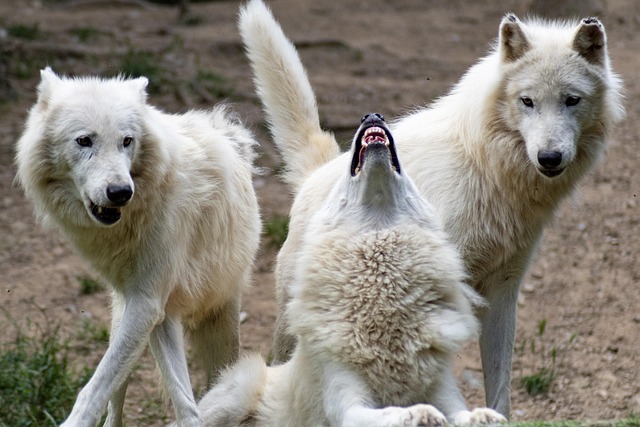Dire Wolves Reborn: Romulus, Remus, and Khaleesi
In a secluded wildlife facility on a 2,000+ acre preserve, three white-furred pups are making history as the first animals ever resurrected from extinction. Named Romulus, Remus, and Khaleesi—nods to both Roman mythology and Game of Thrones—these dire wolf pups represent a groundbreaking achievement in genetic science by Dallas-based Colossal Biosciences.
The Pups: Appearance and Development
The two males, Romulus and Remus, were born in October 2024, while the younger female, Khaleesi, arrived in January 2025. Now approximately 6 months and 3 months old respectively, these snowy-white pups are thriving and already displaying classic dire wolf characteristics.
At just six months old, the male pups weigh approximately 80 pounds, showcasing the robust build that made their ancient ancestors formidable predators during the Ice Age. They exhibit distinctly dire wolf traits—thick white fur, broad heads, and hefty builds—physical characteristics that scientists identified in the dire wolf genome and successfully edited into their DNA.
What’s particularly striking is their behavior. Unlike domestic puppies, Romulus and Remus keep their distance from humans, flinching or retreating even from familiar caretakers. This wariness demonstrates true wild lupine instincts, confirming that Colossal hasn’t just created wolves that look like dire wolves—they’ve successfully revived the authentic behaviors of this long-extinct species.
State-of-the-Art Care Facility
The dire wolf pups aren’t living in laboratory cages or small enclosures. They reside on a sprawling 2,000+ acre protected reserve under round-the-clock care and monitoring. The facility—certified by the American Humane Society and registered with the USDA—includes naturalistic habitats designed to accommodate these unique animals.
“Colossal has achieved American Humane Society Certification, the prestigious designation ensuring excellence in animal welfare and care,” notes Robin Ganzert, Ph.D., CEO of American Humane Society. “Optimal welfare is evidenced by spacious habitats with ample space and opportunity for animals to socialize, exercise, and exhibit natural behaviors.”
The company employs ten full-time animal care staff dedicated to supporting the wolves’ physical and mental well-being. The entire preserve is enclosed by 10-foot-tall, zoo-grade fencing with redundant perimeter security, and the wolves are continuously monitored through on-site live cameras, security personnel, and drone tracking.
Within the larger preserve, the wolves have access to a smaller, six-acre secure site where they can receive more focused care. This area includes an on-site veterinary clinic, a wolf management facility, an outdoor storm shelter, and natural built dens.
Health and Development Monitoring
Colossal’s animal care team reports that the pups are in excellent health and are meeting developmental milestones as they mature from newborns to adolescents. The company has implemented a transparent approach to care, including an interactive “dire wolf development tracker” to reassure the public that the revived wolves are being ethically and safely integrated into the modern world.
“The modern dire wolves, Romulus, Remus, and Khaleesi, are healthy and growing according to an abundance of science,” Colossal reports. Veterinary professionals monitor their progress closely, ensuring that these unprecedented animals receive the specialized care they require.
Long-Term Plans
The conservation property will provide lifetime care, feeding, and protection for the wolves. They will be monitored and observed to assess their readiness to move into larger protected and managed care facilities.
Looking toward the future, Colossal plans to eventually restore dire wolves in secure and expansive ecological preserves, potentially on indigenous land. This approach acknowledges both the scientific breakthrough and the cultural significance of bringing back a species that disappeared thousands of years ago.
As Mark Fox, Tribal Chairman of the MHA Nation, expressed: “The de-extinction of the dire wolf is more than a biological revival. Its birth symbolizes a reawakening—a return of an ancient spirit to the world.”
For now, these three historic pups continue to grow and develop under careful supervision, living embodiments of a scientific achievement that many thought impossible. Their white coats and wild behavior connect our modern world to an Ice Age past, reminding us that with advanced technology and careful stewardship, even extinction may no longer be permanent.

